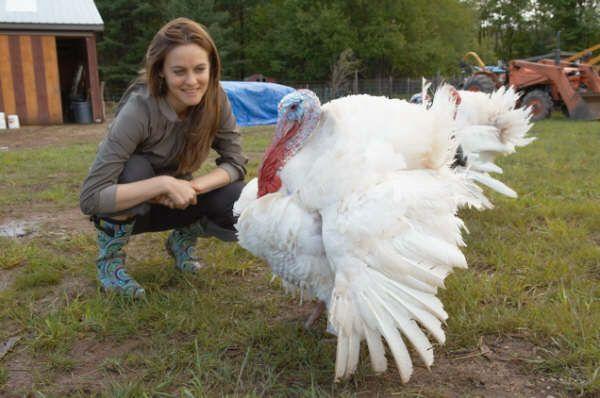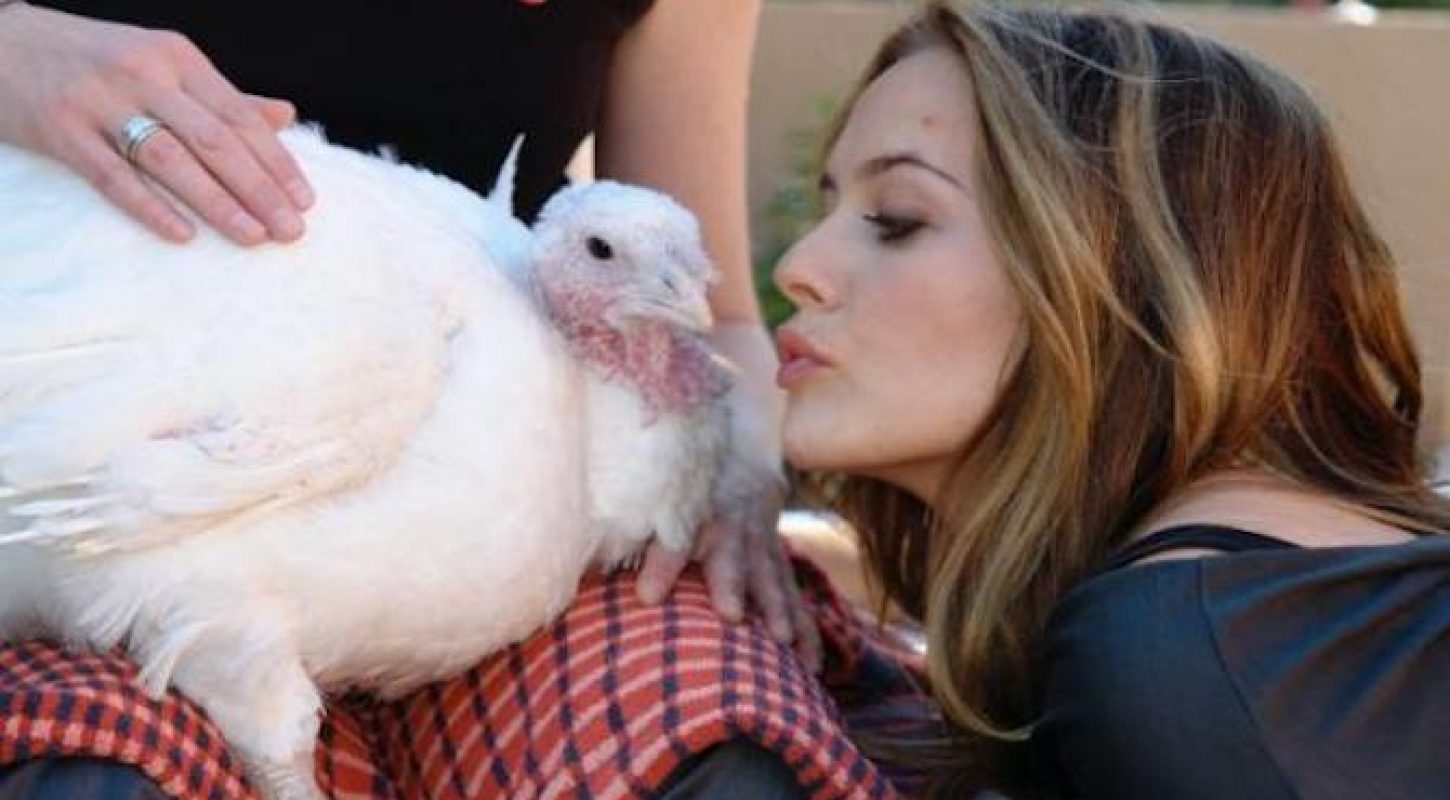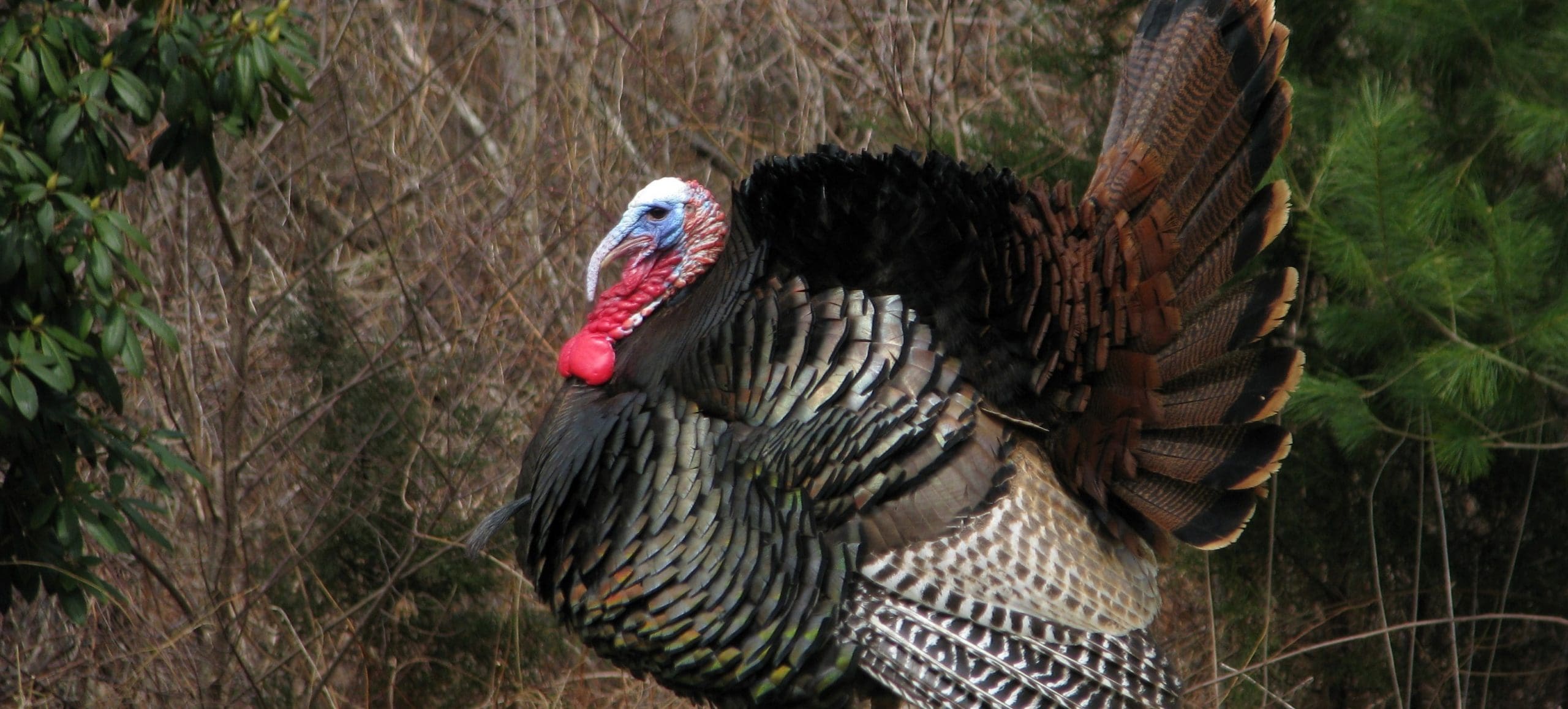I hope everyone is planning a wonderful, kind Thanksgiving! As you’re preparing your yummy dishes, I thought I’d share this great article from Veg News honoring turkeys, their heritage in America, and the sanctuaries that are working to restore the lives of these intelligent birds.
Check it out and tell me what you think!

Turkey Time
By Brooke Still
This Thanksgiving, meet the smart, funny, and affectionate turkeys not destined for your holiday table.
As dropping temperatures, twinkle lights, and the fa-la-la music that sings out of car radios signal, it is officially the holiday season. Now is the time of year for being grateful, spreading joy, and embracing peace. Just like greeting cards abound tell us, ’tis the season of togetherness, giving, and love. In other words, it’s a season of celebrating compassion.
Year after year, to celebrate, families and friends come together in a physical manifestation of Norman Rockwell’s Thanksgiving portrayal, gathered around the holiday table to break bread. And yet at the focal point of the painting is the turkey, a creature who lived anything but a life of freedom. The proud bird now on a platter instead most likely spent his short life on a crowded factory farm, where he was afforded no comfort, little care, and much fear and disgrace. Crammed into a warehouse with sometimes thousands of other birds, the turkeys then face the elements, unguarded, driven to slaughter, if he even survives that long. Only then does he become the centerpiece, the focal point of the meal, and traditionally, the very epicenter of the American holiday table.
The creature that received Benjamin Franklin’s vote to be the national bird over the bald eagle, was meant to lead an enriching, full life, each one possessing his or her own individual personality. Wild turkeys have more than 20 unique vocalizations that can be heard more than a mile away, and they use these voices to recognize and communicate with one another. A turkey emotes through its snood, the flap of skin that hangs over the turkey’s neck. As Jenny Brown, co-founder and director of Woodstock Farm Animal Sanctuary in Woodstock, NY, says, “They have mood-ring like heads that change color depending on their excitement level,” Additionally, wild turkeys are capable of learning the geography of an area as large as 1,000 acres, through which, on short sprints, wild turkeys can run up to 18 miles per hour. They also have the ability to take short flights, bursting into the air like a helicopter.
But put a large, brown and golden-feathered wild turkey alongside a commercially raised, factory-farm turkey, and the vast discrepancies are obvious. The commercial turkey has been stripped of its camouflaged feathers, bred to have starkly white plumage, a result of the consumer desire for all-white meat. The commercial turkey will appear more swollen—between 1965 and 2000, the average weight of a turkey rose 57 percent. This is a result of harmful breeding practices intending to create bigger, bulkier, meatier turkeys. Because people are willing to pay more and more for bigger turkey breasts, the birds suffer. His insides grow faster than his frail, avian skeleton can bear, culminating in a long list of ailments. His legs, toes, and joints will suffer, and he’ll never be able to fly, roost, or run. Even more drastic, the swollen breasts make it physically impossible for the turkey to mount and procreate, thus farmers must artificially inseminate the female birds. He has been de-beaked and de-toed so as not to accidentally hurt the other turkeys with whom he lives in unbearably close quarters. And at the end of the line, it’s estimated that nearly 300 million turkeys are killed each year in the US, 45 million of those for the Thanksgiving holiday alone.
And yet the turkey remains one of the most iconic tokens of the holiday season, an emblem of Americana. They are transported and killed for the Thanksgiving table, they are sold live off of farms, and they are used as incentives for holiday promotions. But in the midst of the dark, rancid life the turkey lives is a solitary beam of hope: the farm sanctuary. Something truly to be thankful for this holiday season are the farm sanctuaries working to rescue and liberate turkeys and provide for them the life they deserve.
Kathy Stevens, founder of Catskill Animal Sanctuary (CAS) in New York’s Hudson Valley, says that while the sanctuary receives turkeys all year round, “We get more bizarre calls about turkeys in distress around the holiday time.” This was the case with Petunia, a small female turkey rescued by Woodstock Farm Animal Sanctuary (WFAS). Petunia was found being chased by kids down New York streets the day after Thanksgiving. The story goes that a father had brought her to the Thanksgiving table as a gag, after which he put Petunia in the backyard, from where she then escaped. Scooped up just in time by WFAS, she was taken to her first warm barn, temporarily placed in an isolated pen until workers ensured she didn’t have any parasites she could pass on to the other turkeys. It’s a good thing she was clean, because Petunia wasn’t about to wait to meet her new friends. She was still young, and small enough to fly over the wall and join the other turkeys. Today, Brown says Petunia “tears across the yard or driveway from one point to the next for no apparent reason…she’ll get a notion and start running, just because she can—and she’s found a place where she gets to do what she wants and be exactly whom she is.”
As evidenced by Petunia’s eagerness to join her feathered brethren, turkeys often form strong bonds with one another, creating a “social network like anybody else,” says Gene Baur, co-founder and president of Farm Sanctuary. “You bring in somebody new, they sort of adjust to how they relate to each other…you remove certain ones…they miss their friends,” Baur says. Not only do turkeys become attached to one another, but also they often can find friends among other species. Such was the case with Ian, a shy turkey, left out of his flock at Peaceful Prairie Sanctuary (PPS) in Deer Trail, Colo. Having spent most of his time unsure and alone, PPS volunteer Joanna Lucas writes in her story “Ian’s Crossing” that he was “a shy and serious bird, a grave and silent little person, craving tenderness.” That tenderness came when a hen rescued from a backyard egg operation named Simone came to PPS. The two “gravitated toward each other,” Lucas writes. When Simone fell ill and needed constant care inside of the house, Ian sat patiently each day at the front door, waiting for the volunteers to bring Simone out so he could nestle beside her pillow. And when Simone finally passed, they brought Ian her empty pillow, next to which he sat all summer long.
Turkeys have been known to create strong connections with humans as well. “Once they trust that they’re safe, they do tend to seek people out,” Stevens says. “They sit in our laps, they coo when they’re happy, they put their wings down on the ground, which is sort of the turkey equivalent of a huge smile.” At Farm Sanctuary in Orland, Calif. lives Lydia, the “hugging turkey,” Baur says. If one of Lydia’s human friends were to come visit her in the barn, Baur says, she would graciously greet them by craning her neck.
This Thanksgiving, vegetarians, farm sanctuaries, and even Ellen DeGeneres (Farm Sanctuary’s official sponsor for its annual Adopt-A-Turkey event) are encouraging Americans everywhere to keep turkeys off our plates, end the cycle of cruelty, and celebrate these marvelous birds. Check out some of the celebrations and programs happening across the country:
ThanksLiving, Woodstock Farm Animal Sanctuary, Woodstock, NY
Celebration FOR the Turkeys, Farm Sanctuary, Watkins Glen, NY
Adopt-A-Turkey Project, Farm Sanctuary, Nationwide
A Gentle Thanksgiving, Gentle Barn, California/Tennessee/Missouri




